Zaha Hadid, Ben van Berkel and more design 3D-printed shoes for United Nude
Milan 2015: five well-known architects and designers have created pairs of sculptural shoes for footwear brand United Nude made entirely on a 3D printer (+ slideshow).
United Nude founder Rem D Koolhaas enlisted architects Zaha Hadid, Ben van Berkel and Fernando Romero, and designers Ross Lovegrove and Michael Young, to create pairs of women's shoes solely using 3D printing.
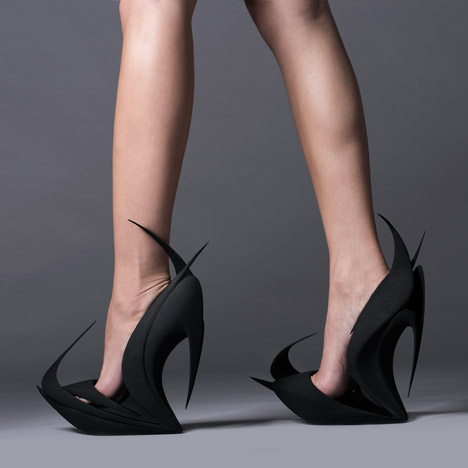
"We want to push the technology but I also wanted to push the silhouettes," Koolhaas told Dezeen. "I also wanted to create conversational pieces and shoes that are not necessarily for everyday wearing but really are beautiful pieces and conversational pieces, almost like art."
The shoes each took about 24 hours to print using a sPro 60 selective laser sintering (SLS) machine made by 3D printing company 3D Systems.
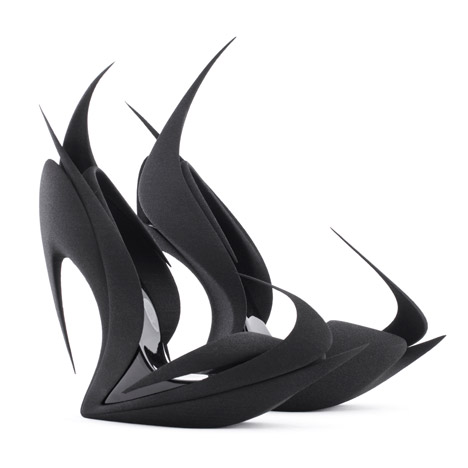
The process starts with a container filled with powder, which is heated in places, as specified by a digital file. This fuses the material together layer by layer until the final form is built up. Once complete, the excess powder is broken away to reveal the design.
Each pair was created using two different materials: the soles were printed in hard nylon, while the uppers were formed from thermoplastic polyurethane (TPU), which is softer and more flexible.
London-based Zaha Hadid previously collaborated with United Nude on a pair of striated shoes with cantilevered heels launched in 2013.
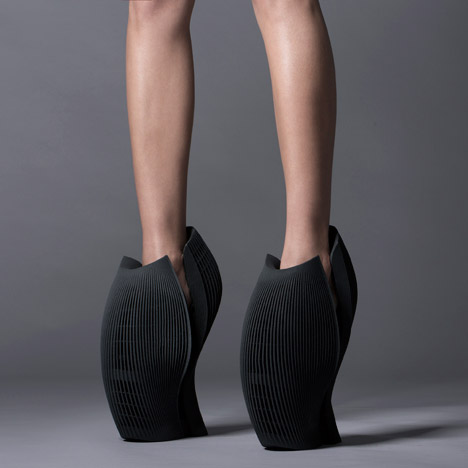
Her new Flames shoes were designed at the same time as a concept, but were resurrected to fit in with this project.
The black designs – which look the most like a typical high-heeled shoe out of the set – feature thorn-like spikes that surround the feet.
UNStudio founder Ben van Berkel likened his grey footwear to a "hoof" due to the shape of the curvaceous shell, formed from a grid of emphasised vertical lines.
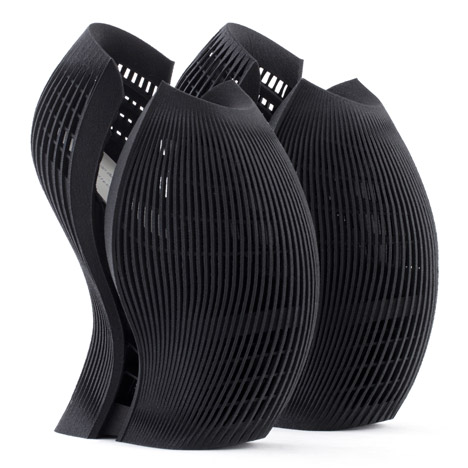
"We started off by thinking about how we could work with the idea of verticality and how you can extend the length, especially if you see it from the back," Van Berkel told Dezeen.
The casing reaches all the way down to the floor and conceals the sole and foot, though S-shaped slits provide glimpses on each side.
"They are very easy to walk in," said Van Berkel. "We made a strong construction inside the shoe so that whenever you walk on it you feel stable."
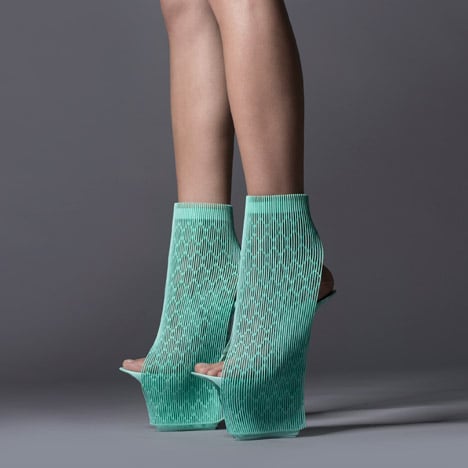
British designer Ross Lovegrove worked with Grasshopper software expert Arturo Tedeschi to create the tall fine mesh that shrouds the sole and the wearer's foot like a curtain, and opens at the toe and heel.
"I've gone for extreme verticality," said Lovegrove, who designed the upright elements of his green Ilabo designs to be as thin as the machine could manage.
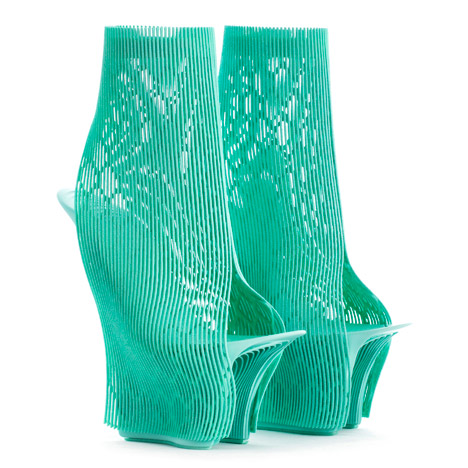
"I'm interested in the idea of de-materialism and minimum material and I also wanted to see the foot, I wanted the ladies' anatomy to participate in the design," Lovegrove added.
The black Young Shoe by Hong Kong-based Michael Young is formed from a solid base topped with a latticed block positioned at an angle to the ground.
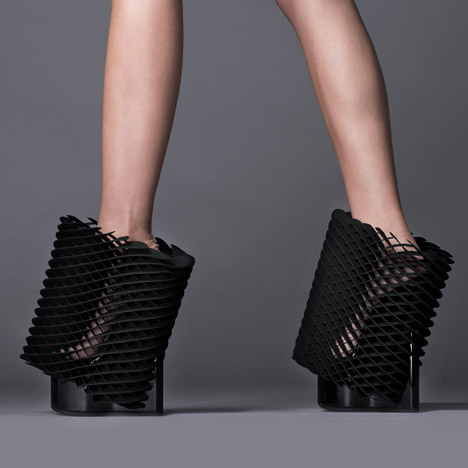
"It's actually comfortable to wear although it doesn't look like it," Young told Dezeen. "I just wanted to take a completely different approach to the way we normally work and just embrace that sculptural aspect."
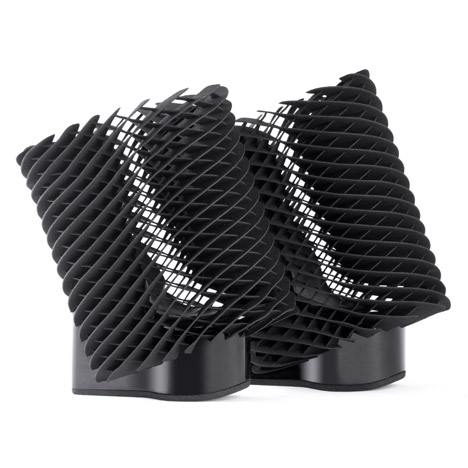
Finally, Mexican architect Fernando Romero's red Ammonite shoes are based on the spiral shells of fossilised sea creatures. The designs have a pentagonal profile, completely covering the foot and ankle.
The shoes are on display inside an entirely black room with no daylight at the Teatro Arsenale in Milan until 19 April.
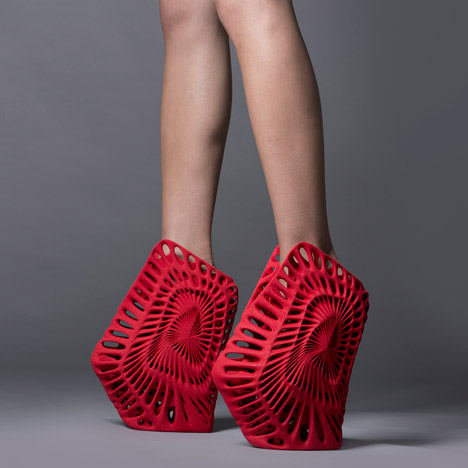
Each pair of shoes is contained in a glass case on top of a podium, all raised up on a platform and illuminated with ceiling-mounted spotlights.
"I really wanted to create something with a heavy impact and something that you remember," added Koolhaas.
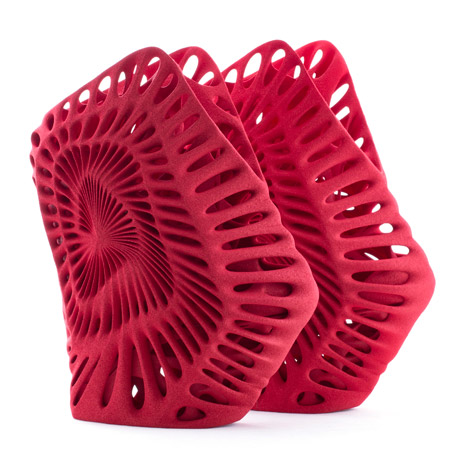
Four more vitrines showcase a selection of United Nude's previous designs, including 3D-printed shoes designed with Iris van Herpen that look like tree roots.
One display is dedicated to the evolution of Koolhaas' Möbius shoe, which he launched the company with in 1999.